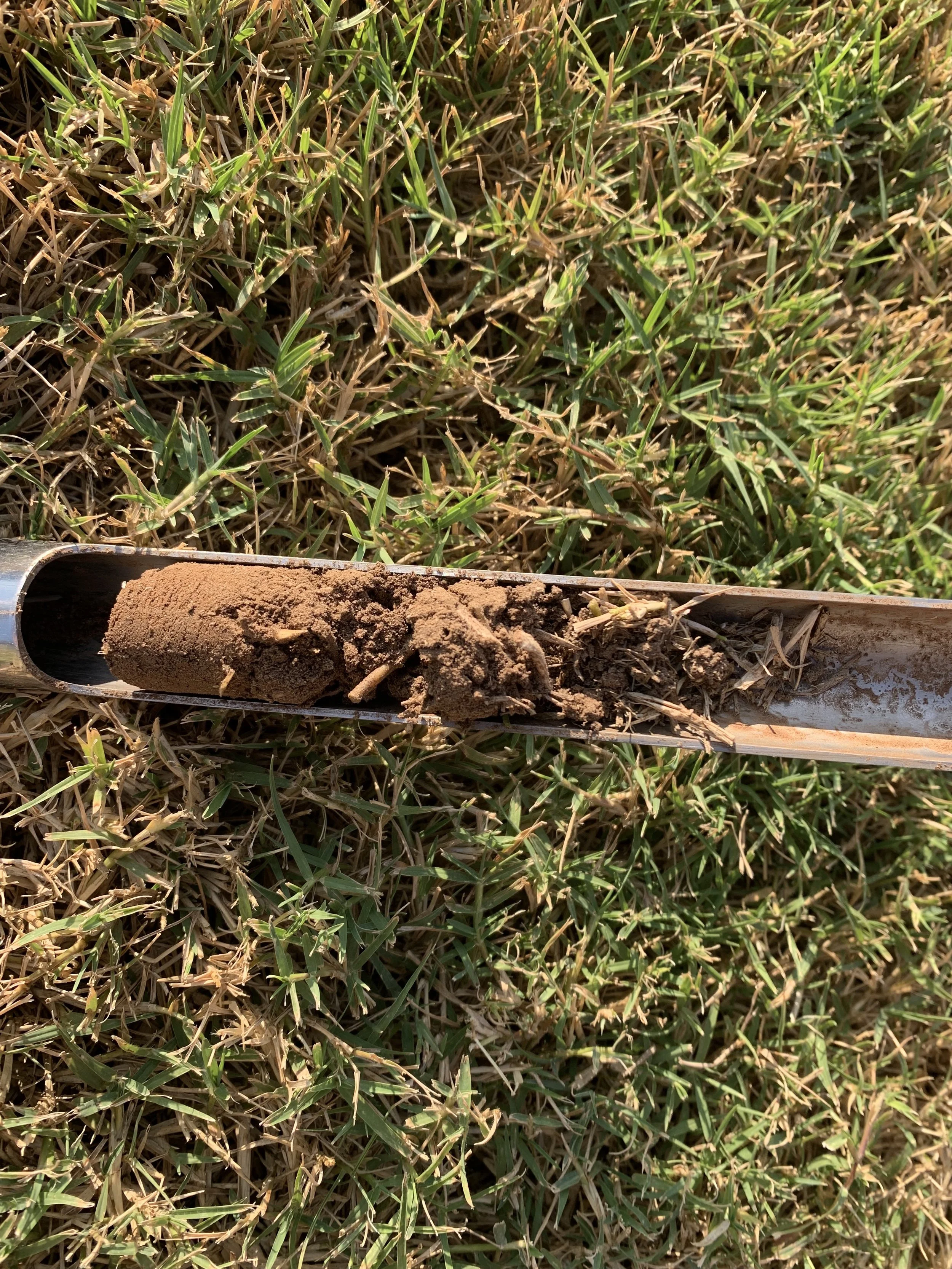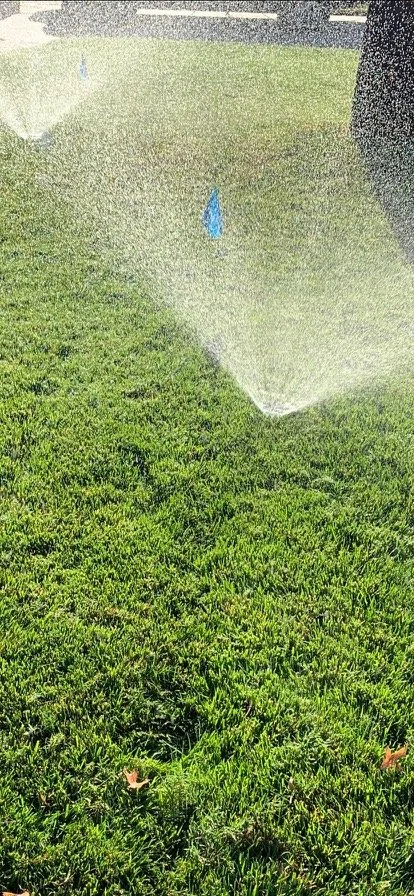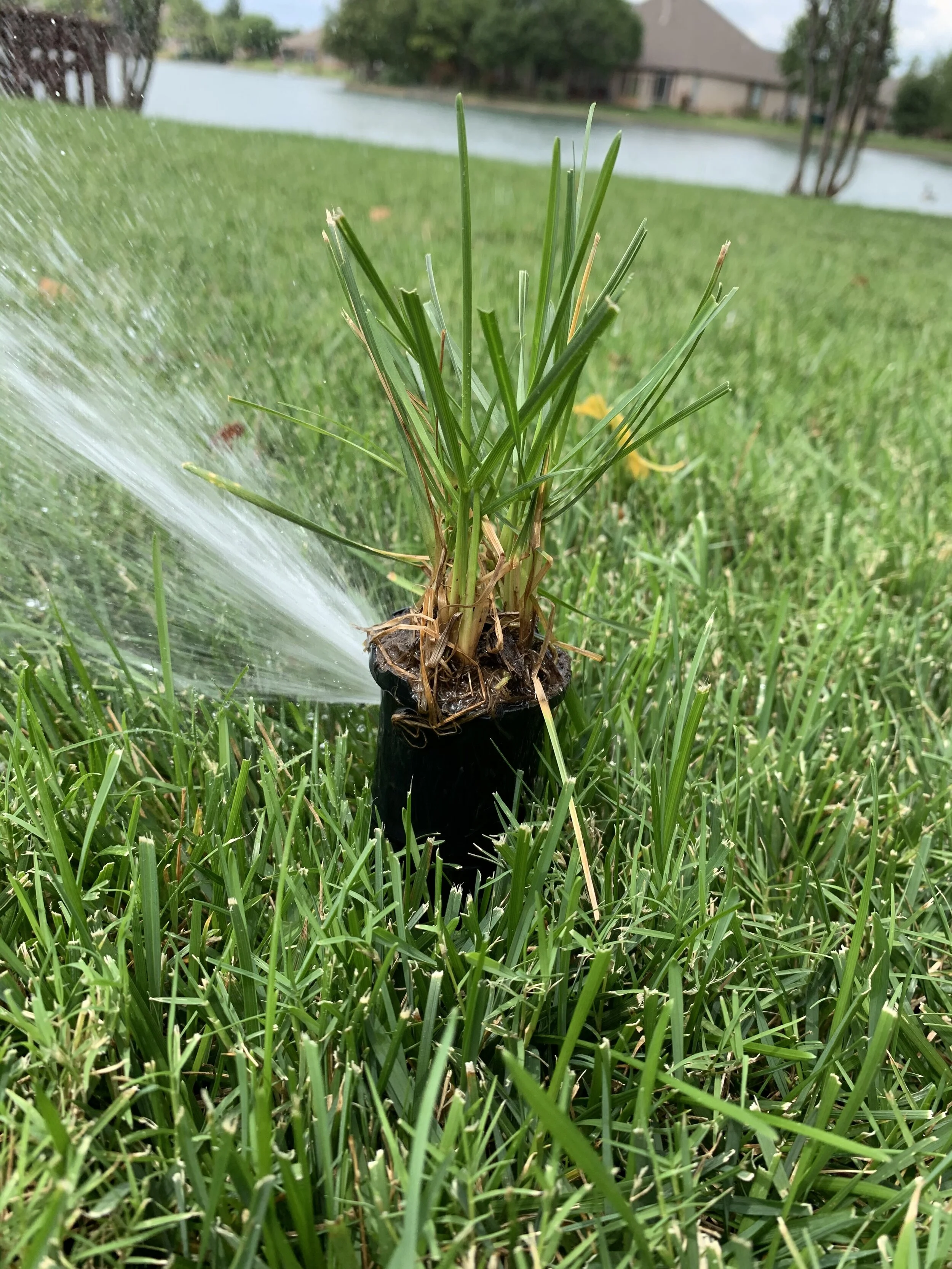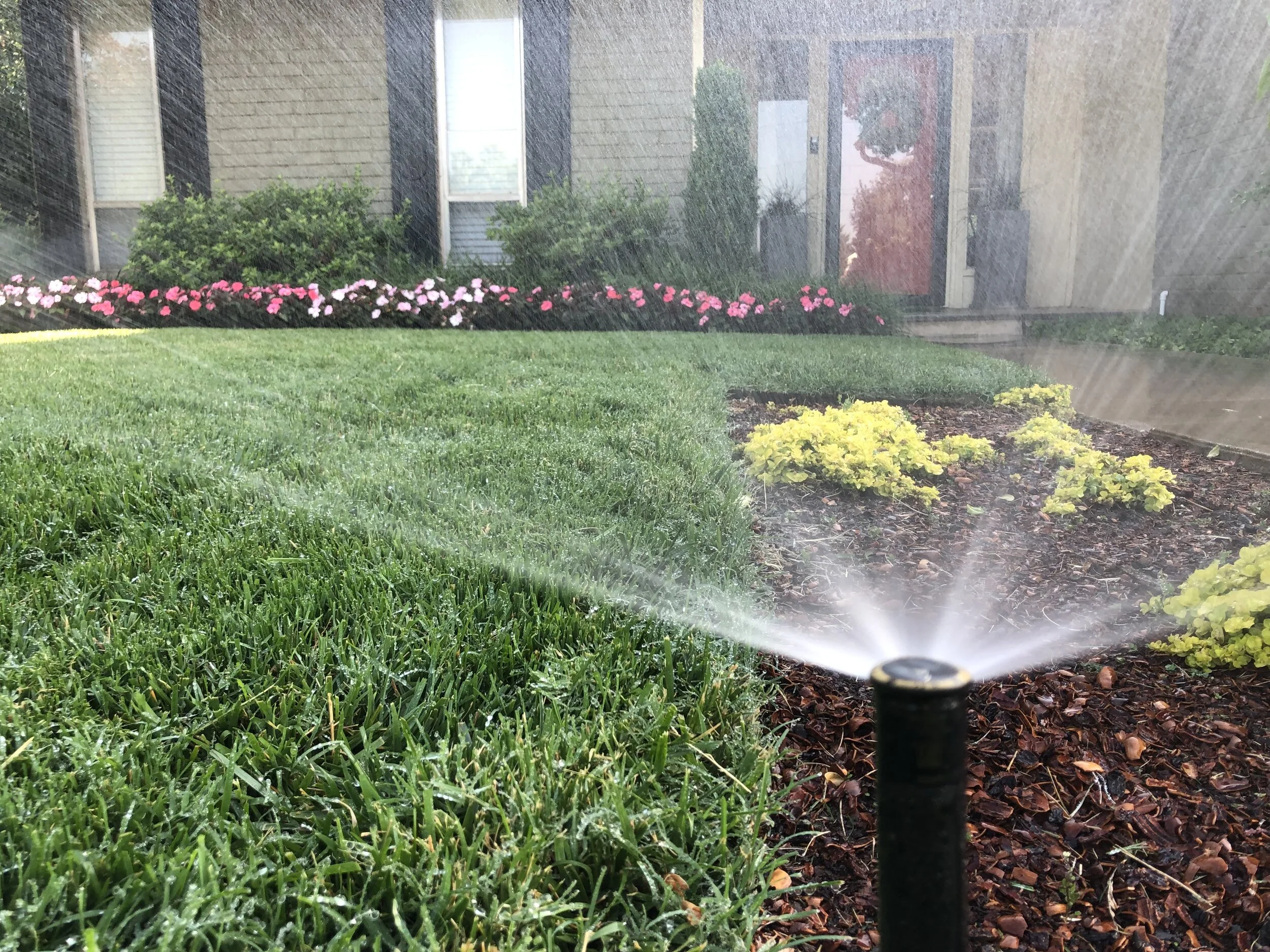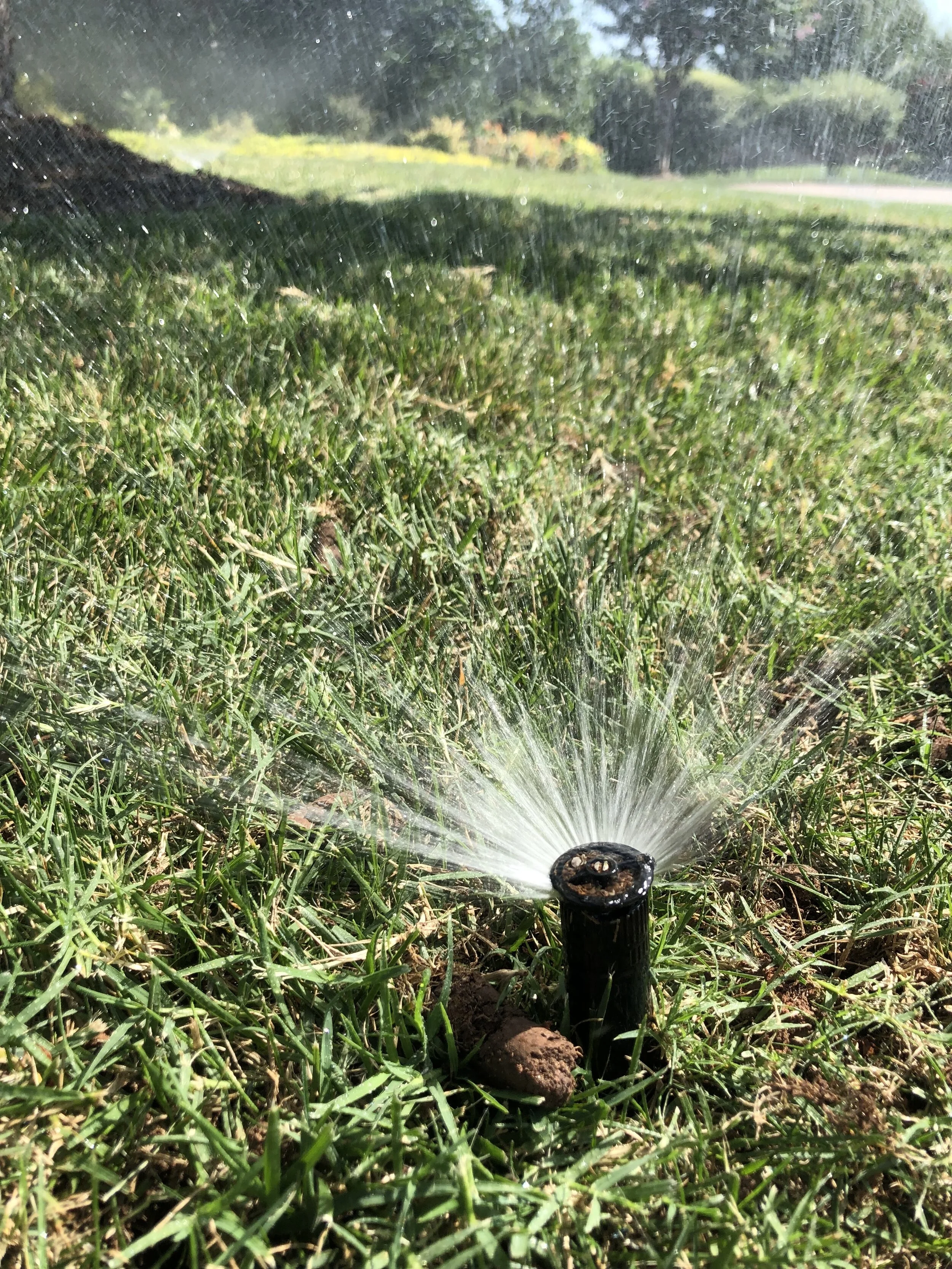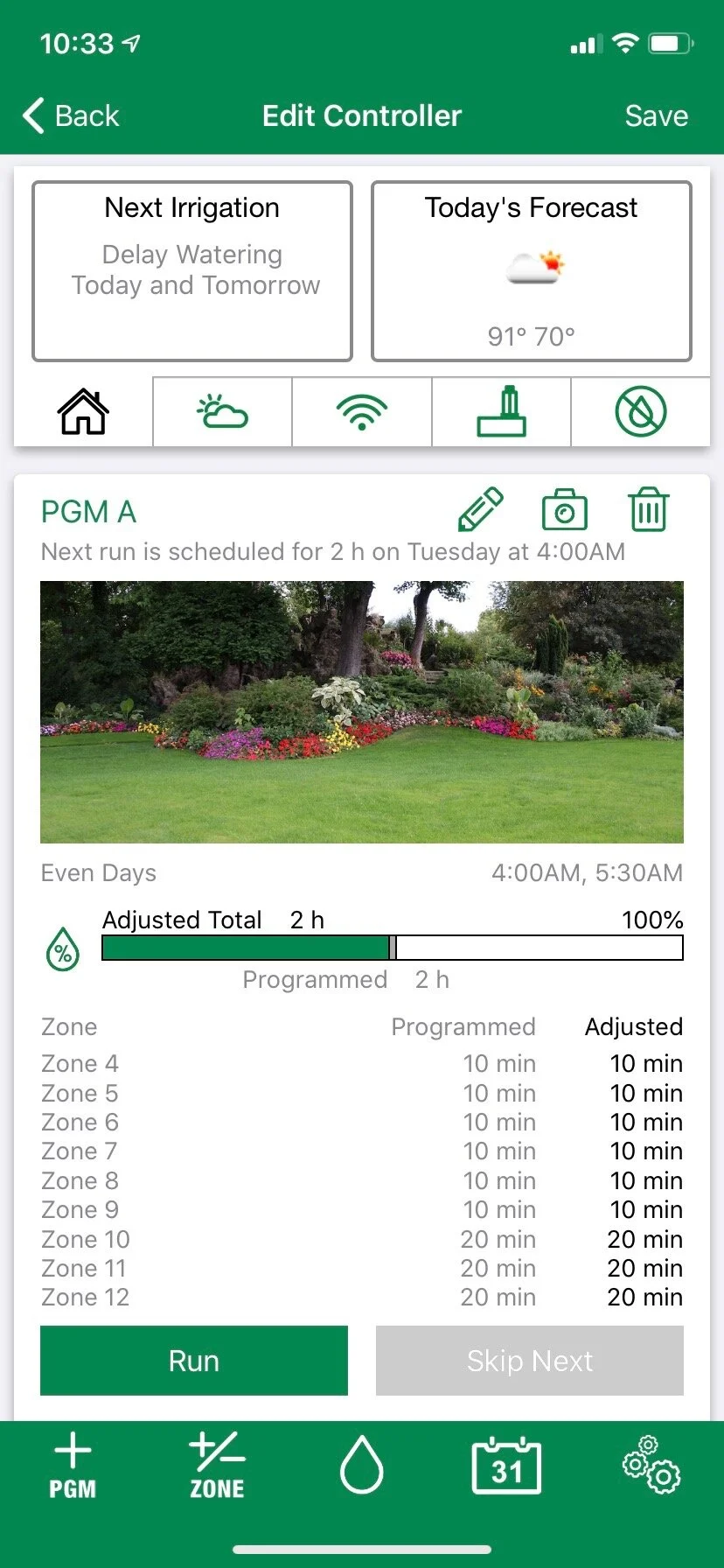Most of the Oklahoma City metro received less than 1.5” of rain in the past 60 days, not enough.
Over the same 60 days, our lawn and landscapes have experienced at least 17 days of 100-plus-degree temperatures.
The last half of the Summer of 2023 has been brutal on our lawns and landscapes.
Thankfully, it looks like the heat and dryness of summer are about to give way to cooler temperatures and the return of moisture.
It won’t be long before your lawn and landscape no longer need 1.5” of water per week.
One of the most important things you can do to have a healthy lawn and landscape is to align your watering habits with weather patterns.
Healthy irrigation is watering based on need.
Healthy irrigation is infrequent, deep watering.
Unhealthy irrigation is shallow, frequent watering.
Unhealthy irrigation is setting your irrigation in the spring on an ODD or EVEN setting and leaving it the same until you shut it off in the winter.
From lawns that are not irrigated, cores are shallow with bone dry soil. Sadly, we are finding similar cores in irrigated lawns with watering habits that are only keeping the top 1/4-1/2” moist.
From lawns that have been watered deeply over the last 6-8 weeks, we are able to easily pull deep cores that have adequate soil moisture to withstand the summer heat.
We have visited too many lawns and landscapes over the past few weeks as the heat lingered that were being watered, but they still showed signs of drought stress. Lawns that when you pulled a soil core, you found soil moist only for the top ¼” to ½” and completely dry soil below. Lawns with roots only ½” deep. Lawns that were dependent on daily watering. Lawns that were being watered in 100-degree heat as if it was still May.
If you want the best lawn and landscape, learning to water based on need is a critical element.
As temperatures cool and day length becomes shorter, your lawn and landscape will need less moisture.
Follow these irrigation tips in through the Fall:
Water Less Often – Don’t reduce the length of time each zone runs. Instead, water less often. Set your irrigation to run every 4 days instead of every other day.
Common question: “Should I reduce how long my system runs by 50% now?”
Answer: No. Keep the run time the same and water less often.”
This fall instead of reducing how long a zone runs, water less often for the same amount of time you watered during the summer heat.
Water Deep Not Shallow – Deep watering is important in every season. Shallow, frequent watering promotes shallow roots, increases weed content, promotes diseases, and reduces cold hardiness. If you can get 1” of water on your lawn in a single watering without causing excessive runoff, water just one time per week. But, for most of our soils you should plan on watering ½” twice per week. It is best to saturate the soil each time you water and then allow it time to dry before watering again.
Deep soaking, infrequent watering is an important best practice in developing a healthier, deep rooted lawn even in the fall.
Know How Long You Need To Water – One piece of information that will make a big difference in your watering decisions is knowing how much water your lawn and landscape are receiving each time you run your system. Take a few minutes to set a few containers around your lawn. Run your system through a cycle and measure the amount of water in the container. If your system puts out ½” of water, watering every 4 days this fall is perfect. If it puts out less, don’t increase how often you water, instead increase the amount of time each zone runs until your containers receive ½”.
If you have areas of your lawn that have lost color in the heat, checking the amount of water the area is receiving should be your first step. There is a good chance the area needs a head or nozzle adjustment.
Don’t assume that the way you have always set your irrigation is best. Do the work. Find out if your lawn is actually receiving the amount of water it needs to be healthy.
Water Based on Need – The perfect situation would be to inspect your lawn every few days and make watering decisions based on need. If the grass doesn’t spring back up after walking on it, it is time to water. If plant leaves start showing signs of wilt, it is time to water. Another easy test is to take a long screwdriver, if it slides easily into the soil you don’t need to water. Remember, plants and turf will spring back quickly from slight wilt. They don’t recover quickly from being over-watered.
One of the best gifts you can give your lawn and landscape is to take a moment to inspect it each week.
Just a few minutes looking and asking yourself if everything looks healthy.
Just a few minutes of being proactive instead of reactive.
Water Based on Weather – Over the next 90 days, the average rainfall in the Oklahoma City area totals 8.5”. Your lawn and landscape will need approximately 12” over the next 90 days. There is a good chance your irrigation system will be in the off position some over the next 90 days.
https://mesonet.org/ is a great weather resource for making water decisions.
https://www.mesonet.org/index.php/weather/map/2-inch_fractional_water_index/soil_moisture will give you the amount of moisture in the top 2” of the soil. A reading of 1.0 tells you the soil contains all the moisture it can absorb, and any additional water will run off, a big waste of money and water.
A rain/freeze sensor will interrupt the watering cycle anytime it rains or if temperatures are below freezing.
A key to successful overseeding this fall is keeping the area tacky moist until the seed germinates.
Tools to Improve Watering Efficiency:
Add A Rain/Freeze Sensor – A sensor will interrupt a run cycle when we have had enough rainfall. A rain/freeze sensor will pay for itself in water savings.
Add a Wi-Fi Link – Several of our customers have installed the Rainbird Wi-Fi Link and allowed us the ability to monitor their irrigation systems. Daily we survey the Mesonet site for key weather data, make moisture need decisions and adjust systems. A rain sensor will stop a cycle, but with the Wi-Fi Link we can remotely adjust your system based on current weather data.
With the Rainbird Wi-Fi Link system, we are able to make adjustments to your system based on actual rainfall and moisture readings in your area.
Exception to the Rule – If you are overseeding with fescue this fall, one of the keys to success is keeping the seeded area tacky moist until the seed germinates. Typically, this takes 10-14 days. We recommend setting the zones in the seeded areas to run three short cycles (3-5 minutes) per day: 4:00 AM, 10:00 AM, and 4:00 PM.
Tree Watering Tip – Trees planted in the last few years often need more water during periods of heat and drought than your irrigation system will supply. The goal is to give them 10 gallons per week. A simple way to ensure they are receiving enough water is to take a 5-gallon bucket and drill 3-5 small holes in the bottom. Place the bucket near the base of the tree, fill with water and allow the water to slowly soak into the soil. Repeat twice per week. (If you are concerned about the way it looks, use this trick overnight.)
Irrigation systems are great tools for maintaining great lawns and landscapes.
But irrigation systems are not an asset when they are “set and left”
with the same program in all seasons and weather conditions.
If you need help with watering issues, let us know. We would enjoy helping you manage your landscape’s water needs in the most economical and efficient ways.
Lorne Hall
Hall | Stewart Lawn + Landscape
(405)367-3873


